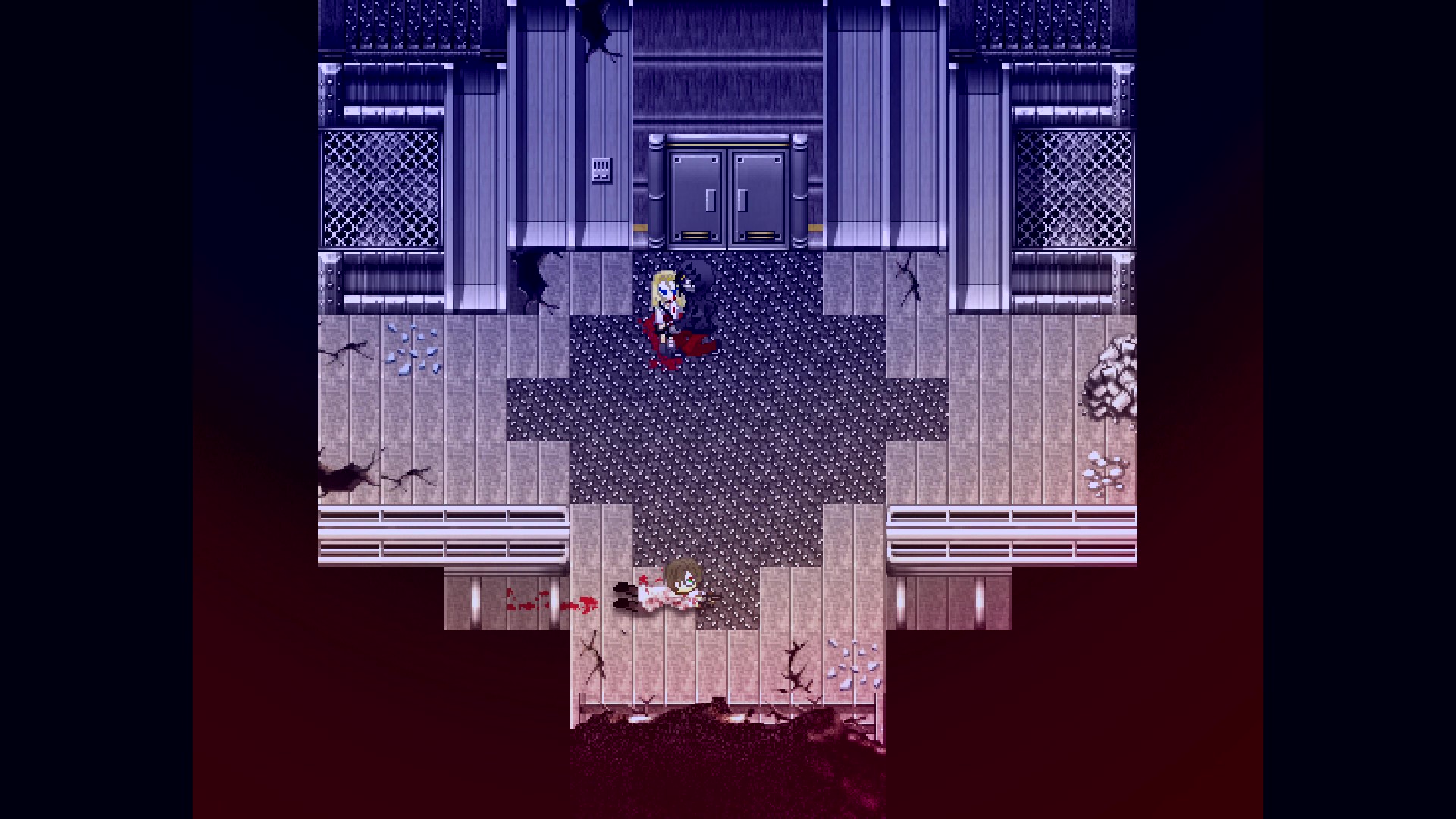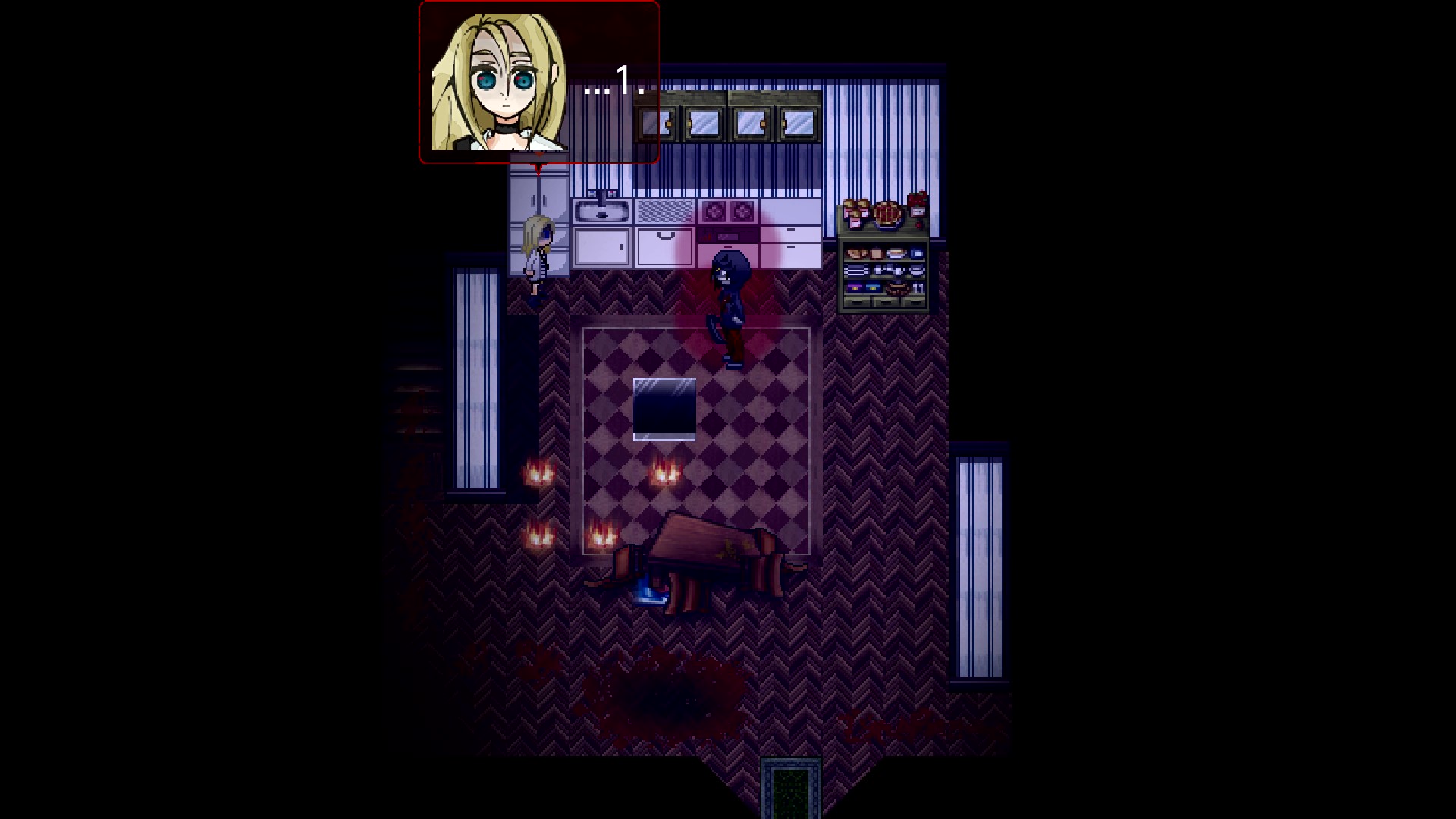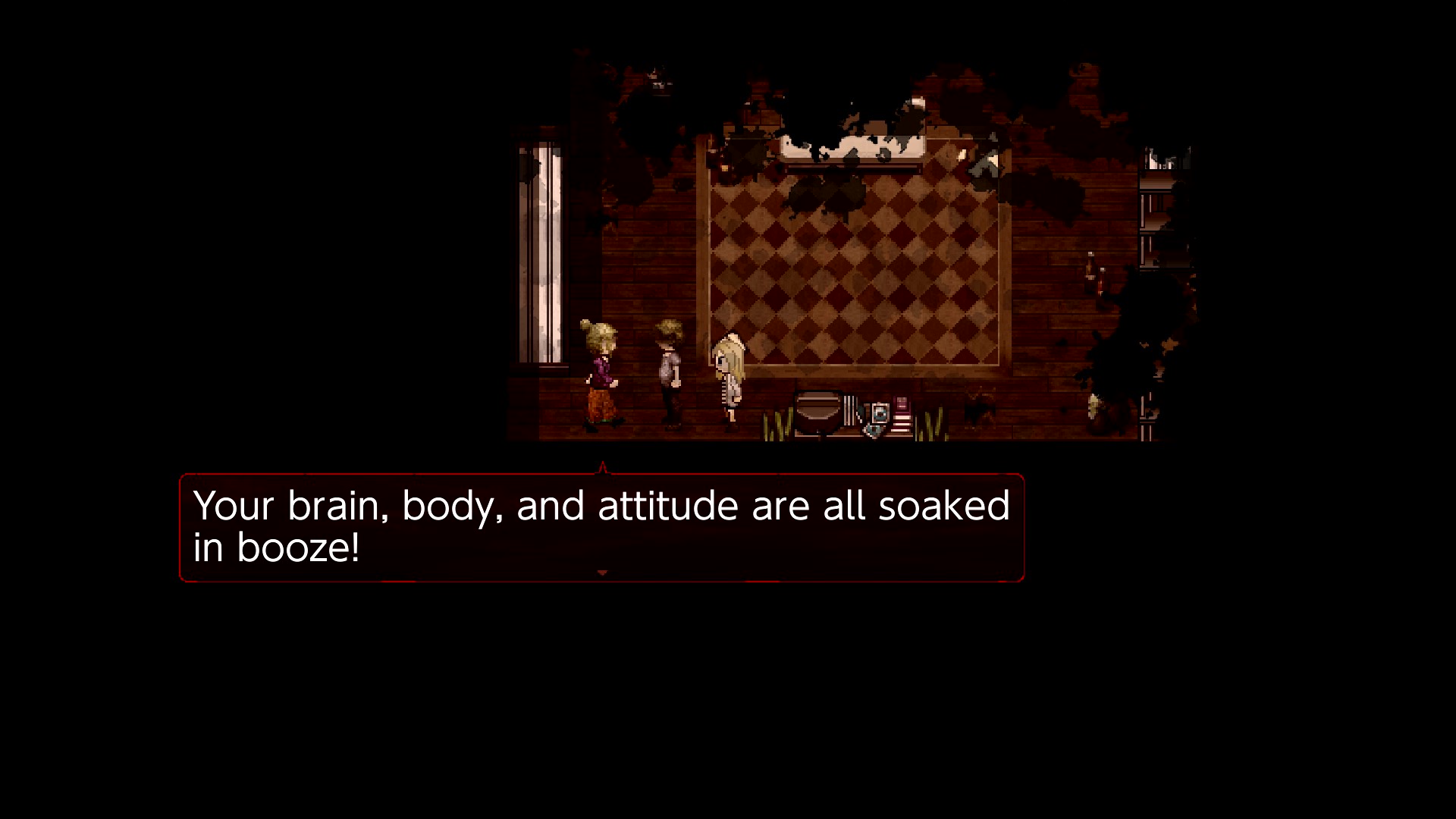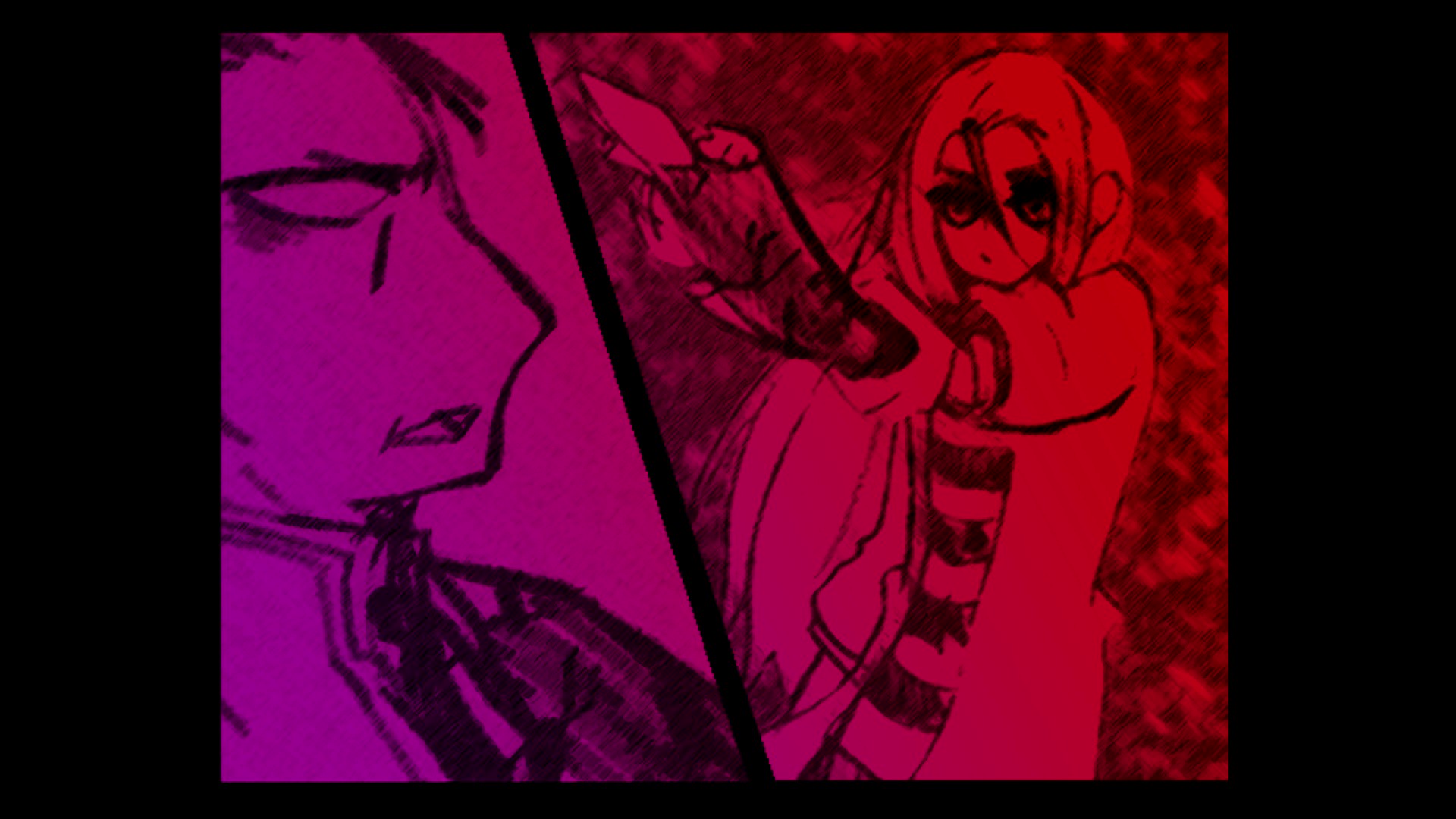For the Love of Kami-Sama
The Japanese entertainment industry is second only to the porn industry in how well it caters to niche audiences. There are hack-n-slash video games with as many boobs as there are enemies. A few too many anime series involve ongoing brother-sister sexual tension because that’s healthy. Even gore finds a way into hentai to create the nastiest Reese’s peanut butter cup out there. There’s just something for everyone. I do recognize that all of these “niche” examples relate to sexual themes, but I started with a reference to the porn industry, and it’s hard to get porn out of your head once it’s in there.
Westerners who enjoy Japanese media already belong to a niche audience, and their tastes in anime/manga/video games further divide the fan base. Thus, when you have a “Japanese horror adventure” like Angels of Death, you wonder who wants this catering service. Because Angels of Death has its own anime, it must have a target audience. Perhaps as a freeware title, the game was just promising enough to stand out from the garbage. On the eShop of paid content, it’s just another piece of trash.
What is it?
Angels of Death does little to separate itself from a book or light novel. You can walk, run, and interact with your environment, but the game’s linear path allows for no exploration. Your main task is to move from dialogue sequence to dialogue sequence. Puzzles do occur, but because Angels of Death fears gameplay, it will tell you immediately how to solve them. You can also die sometimes, but death is most often avoided by simply running forward.
In the absence of gameplay, the game focuses on its story which follows 13-year-old Rachel “Ray” Gardner as she suffers from “Convenient Amnesia.” She finds herself in an unfamiliar building, tasked with ascending six floors to escape her strange situation. However, a murderous “floor master” (not be mistaken with the more frightening Wallmaster or ceiling fan) lurks on each level. Ray quickly partners with Zack Foster—the bloodthirsty but brainless floor master of B6—to overcome all others floors so that Zack can escape and kill her.
Yep, she wants to avoid being murdered so she can later be murdered by Zack. “Instantaneous Stockholm Syndrome” is a common symptom of “Convenient Amnesia,” and craving one’s own murder is simply a later side effect.
To give some background, Hoshikuzu KRNKRN created the game in RPG Maker and released it episodically for free. Its popularity then led to a manga and anime adaptation along with novels, prequels, and other offshoots. It’s supposedly a big thing, like Pogs or fidget spinners. Incidentally, Angels of Death’s true mystery challenges us to look outside the game, to understand how the hell it gained such a massive fan base in the first place.
What’s good?
- Zack’s character becomes endearing towards the final third of the story. In many respects, Zack embodies the clichéd brooding bad guy who spits on social norms but ultimately reveals his tender soul to his true love. If that makes your heart flutter, you may be an angsty teenager. That said, Zack eventually becomes a tragic, likable figure in spite of the anime archetypes. He is profoundly stupid, not knowing how to read, properly care for his burned body, or eat healthily. He is traumatized, a small boy who never grew up and still cowers from fire. Despite all this, he yearns for normalcy. The rest of his personality may be written by a foul-mouthed fanfic writer, but he at least has some level of depth.
- The music can be pretty good, providing a level of atmosphere. Some songs act like acid on the ears—like the wannabe hard rock cacophony which is Zack’s “freakout song”—but generally, the soundtrack can be pleasant, unlike the game’s copy-pasted environments.
What’s bad?
- The characters are wholly unoriginal. There’s the mysterious protagonist who is less innocent than she appears. There’s the obsessive lunatic who can soak up bullets and knives like immortal gelatin, at least until the final scene. You also have your ominous mastermind who passed Philosophy 101 but flunked Ethics 101. These characters are so boring and familiar they feel like family, the kind of family you avoid unless it’s Thanksgiving.
- The game moves so exhaustingly slowly. The avalanche of dialogue fits the genre but is still suffocating, especially because the characters repeat themselves constantly. Add lethargic animation, random bits of slowdown, and overdramatic scenes, and you, too, will beckon the angel of death to come hither and end your suffering.
- The translator seemed to know how to translate but not how to write. The translator seems a bit British, which naturally offends my American sensibilities, but typos and strange creative choices truly drag on the story. Unless KRNKRN struggled to write without a dictionary of clichés, the English translation botches the dialogue by including inconsistent dialects, thesaurus diarrhea, and an overreliance on naughty words.
- Worst of all, Angels of Death is a horror game that isn’t horrific. You don’t need great graphics and gore to scare people. Fear can come from suspenseful scenes, an eerie atmosphere, off-screen boogeymen, and grotesque imagery. Angels of Death had none of this. I knew Ray and Zack would not die, so I wasn’t scared for their safety. The game heavily relied on “bad-for-no-reason” villains, so they came off as melodramatic rather than menacing. When sentient vomit is the most unsettling thing in the game, the whole thing feels like a creepypasta written by an edgy otaku.
What’s the verdict?
At this point, I’ve talked so much about this stupid game that I’m getting nauseous. Like its main character, it’s lifeless, dull, and overly fixated on religious themes. The anime adaptation at least feels a little more dynamic and has a better translation, but it still can’t produce the scares or any long-term enjoyment. Unless you live, breathe, and barf Japanese entertainment, Angels of Death will bore you to death, which very well may be preferable over finishing the game.
Arbitrary Statistics:
- Score: 4.5
- Time Played: Over 5 hours
- Number of Players: 1
- Games Like It on Switch: The Count Lucanor, Little Nightmares





